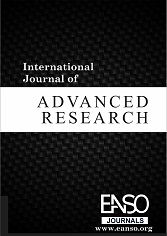Lumasaaba and English Language Reading Comprehension among Primary School Pupils of Sironko District in Uganda
Abstract
The study investigated the effect of Lumasaaba on English language Reading Comprehension among Primary School Pupils in the Sironko district. Two objectives guided the study: to find out the effect of Lumasaaba orthographic patterns and Lumasaaba Cognate awareness on English Language reading comprehension. Much as several studies showed that Lumasaaba and the English language share some linguistic features like the alphabet and cognates, there was a dearth of studies that identify which features of Lumasaaba need to be shared for transfer to be effective and to demonstrate whether pupils were aware of these cognates, and activate them in reading comprehension. The study used a cross-sectional survey research design to assess the effect of Lumasaaba on pupils’ English reading comprehension in Mafudu Sub County, Budadiri West, Sironko District in Uganda. The study used a language test to evaluate Primary Five (P5) pupils’ English reading comprehension, cognate awareness, and spelling proficiencies. The results showed that pupils who did not receive Lumasaaba instruction performed slightly better than those pupils who received Lumasaaba instruction. Besides, Lumasaaba orthography and cognates were significant predictors of English language reading comprehension proficiency, Lumasaaba Cognates emerged as the most significant predictor (β = .294, p= .000 compared to Lumasaaba Orthography (β = .196, p= .006). The researchers conclude that lexical similarities between Lumasaaba and English as well as the nature of Lumasaaba writing patterns enhance English language reading comprehension proficiency. The findings highlight the need for educators to consider Lumasaaba orthographic patterns and cognates when designing reading instruction for Lumasaaba bilingual pupils
Downloads
References
Akampurira, P., Bamwoyeraki, S., & Odoi, L. (2016). Primary English: Learner's Book 5. . Kampala: Fountain Publishers.
Amin, M. E. (2005). Social Science Research: Conception, Methodology and Analysis. Kampala: Makerere University.
Borleffs, E., Maassen, B. A., Lyytinen, H., & Zwarts, F. (2019). Cracking the Code: The Impact of Orthographic Transparency and Morphological-Syllabic Complexity on Reading and Developmental Dyslexia. Frontiers in Psychology, 1-19. doi: https://doi.org/10.3389/fpsyg.2018.02534
Chetail, F. (2015). Reconsidering the role of orthographic redundancy in visual word recognition. Psychology, 1-20. doi:10.3389/fpsyg.2015.00645/full
Creswell, J. W. (2014). Research Design: Qualitative, Quantitative, and Mixed Methods Approaches. Thousand Oaks, California: SAGE Publications, Inc.
Deacon, S. H., Wade-Woolley, L., & Kirby, J. R. ((2009). Felxibility in Young Second-Language learners: examining the Language specificity or orthographic processing. Journal of Research Reading, 215-219. doi:10.1111/j.1467-9817.2009.01392.x
Durgunoglu, A. Y., & Hancin-Bhatt, B. J. (1992). The Role Of First Language In The Second-Language Reading Process. Urbana-Champaign: University of Illinois.
Fender, M. (2008). Spelling knowledge and reading development: Insights from Arab ESL learners. Reading in a Foreign Language, 19–42.
Fountain Publishers. (2016). Lumasaaba English Dictionary. Kampala: Fountain Publishers.
Fumeroa, K., & Tib, S. (2020). The Importance of Morphological Awareness in Bilingual Language and Literacy Skills: Clinical Implications for Speech-Language Pathologists. Language, Speech, and Hearing Services in Schools, 572–588. Retrieved from https://files.eric.ed.gov/fulltext/EJ1261079.pdf
Heaton, J. B. (1990). Writing English Language Tests. New Edition. Longman Handbooks for Language Teachers. New York: Longman.
Hipfner-Boucher, K., Pasquarella, A., Chen, X., & Deacon, S. H. (2016). Cognate Awareness in French Immersion Students: Contributions to Grade 2 Reading Comprehension. Scientific Studies of Reading, 389-400. doi:10.1080/10888438.2016.1213265
Kamugisha, S. (2017, January 9). Why thematic curriculum is still a challenge to schools. Retrieved from The Observer: https://observer.ug/education/50699-why-thematic-curriculum-is-still-a-challenge-to-schools
Krejcie, R. V., & Morgan, D. W. (1970). Determining Sample Size For Research Activities. Educational and Psychological Measurement, 607-610.
Lumasaaba Language Academy. (1995). The Standard Orthography of Lumasaaba. Kampala: Language Teaching Resource Centre, Makerere University.
Majorano, M., Bastianello, T., Bodea-Hategan, C., Fantuzzi, P., Fontana, G., Hoste, E., . . . Persici, V. (2021). Early Literacy Skills and Later Reading and Writing Performance Across Countries: The Effects of Orthographic Consistency and Preschool Curriculum. Child Youth Care Forum, 1063–1085. doi: https://doi.org/10.1007/s10566-021-09611-7
Masinde, A. (2016, November 30). Schools urged on mother tongue instruction. Kampala, Central, Uganda. Retrieved from New Vision: https://www.newvision.co.ug/news/1441160/
Melby-Lerva˚g, M. L. (2013). Reading Comprehension and Its Underlying Components in Second-Language Learners: A Meta-Analysis of Studies Comparing First- and Second-Language Learners. Psychological Bulletin, 409–433. doi:10.1037/a0033890
Moats, L. (2019). Phonics and Spelling: Learning the Structure of Language at the Word Level. In D. Kilpatrick, R. Joshi, & R. Wagner, Reading Development and Difficulties (pp. 39–62). Cham: Springer. doi: https://doi.org/10.1007/978-3-030-26550-2_3
Odlin, T. (2003). Cross-Linguistic Influence. In J. C. Doughty, & H. M. Long, The Handbook of Second Language Acquisition (pp. 436-486). Malden: Blackwell Publishing Ltd.
Proctor, C. P., & Mo, E. (2009). The Relationship Between Cognate Awareness and English Comprehension Among Spanish–English Bilingual Fourth Grade Students. TESOL Quarterly, 126–136. Retrieved from http://www.jstor.org/stable/27784991
Robles, O. (2010). Using Cognates with English Learners at 5th Grade Level: Strategies for Teachers and Parents to Build Reading Comprehension in Science. Chico: California State University.
Toboada, A. (2009). English language learners, vocabulary, and reading comprehension: What we know and what we need to know. In F. Falk-Ross, S. Szabo, M. B. Sampson, & M. M. Foote, Literacy issues during changing times: A call to action (pp. 307–322). College Reading Association.
UBOS. (2020). Statistical Abstract 2019. Kampala: Uganda Bureau of Statistics.
Uwezo. (2016). Are Our Children Learning? Uwezo Uganda 6th Learning Assessment Report. Kampala: Twaweza East Africa. Retrieved from www.uwezo.net
Copyright (c) 2024 Zainorice Namukuta, Geofrey Buyera

This work is licensed under a Creative Commons Attribution 4.0 International License.




























